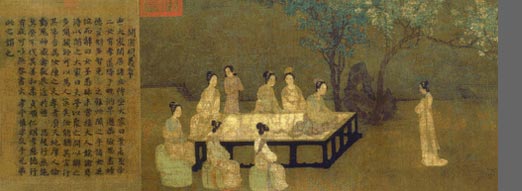|
Situated some 118 kilometers (73 miles) west of Xian, the Famen Temple will appeal to travelers who are journeying west to explore the ancient Silk Road. The temple gained the name Famen (which means the initial approach to become a Buddhist believer) in the Tang dynasty when a wooden four-storey structure was built replacing the original Ashoka Stupa built in the Eastern Han dynasty. The temple with the "the Real Spirit Pagoda," in it enjoyed the reputation of being the "forefather of pagodas and temples in Central Shaanxi," because it held the finger bones of Sakyamuni - the founder of Buddhism.
The underground palace was accidentally discovered in 1985 when the provincial government commenced rebuilding the stupa. The palace is 21.2 meters long with an area of 31.84 square meters and boasts that it is the largest of this kind ever discovered with the remains of the finger bones of Sakyamuni and has valuable relics that enshrined these precious bones.
Finger Bones of Sakyamuni (Buddhist Relics)
About a century after the death of Sakyamuni, the founder of Buddhism, the ancient Indian King Ashoka decided to distribute a selection of Sakyamuni's relics to many places in the known world where Buddhism had gained adherents. The Famen Temple was awarded a finger bone. This happens to be the third of the four discovered here so far, and it was kept in a five-layered marble chest in a secret niche in the back room. It is tubular-like, 37millimeters long, white and yellow in colour. It has been authenticated as genuine - and the only real one here. The other three are "shadow bones": imitations of identical colour and shape to protect the real one. The first one was kept in an eight-layered chest in the back room.
Many other Buddhist relics discovered at the Famen Temple include gold brocades, porcelains and gold plate. The superb techniques of gold brocade in the Tang Dynasty are revealed in the exquisite patterns on embroidered skirts consecrated by the Empress Wu Zetian. These are made out of gold threads, each only 0.1 millimeter thick, finer than a hair, inter-twisted with silk thread.
The Chinese green porcelain known as celadon is unique for its very complicated and fine process techniques, which were kept secret, hence the name "secret celadon". Those displayed here are noteworthy for their research value as fine examples of Chinese porcelain craft.
The gold plated monk's cane is a most precious Buddhist gold and silver relic.
 Features: Features:
Ppresent Chinese timber framework and painting which are basic characteristics of Chinese architecture.
 Architecture Styles: Architecture Styles:
feature characteristics and charms of: Imperial architecture, Religious architecture (Taoist, Buddhist), Garden architecture and General architecture(Hutong ,Siheyuan).
 Architectural Culture: Architectural Culture:
There is always deep relation between Architecture and Culture: It is certain you will learn some cultural facts in so-called Architectural culture in Fengshui and so-called Cultural architecture in Paifang.
Most contents of this topic is from: http://www.travelchinaguide.com
More information, please visit the relative topic of travelchinaguide.com
Edit by Jason
|

